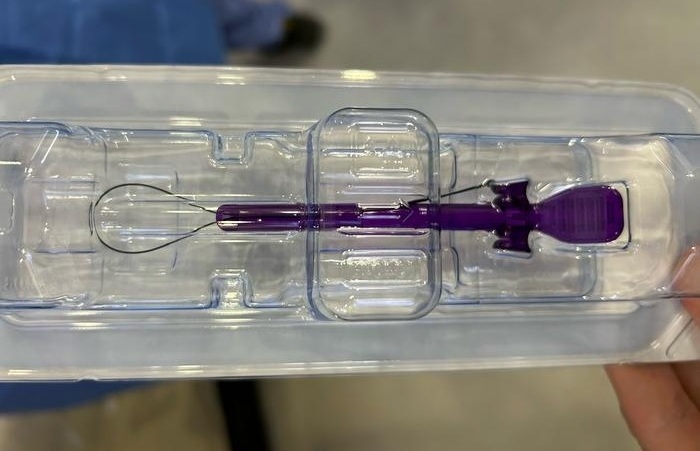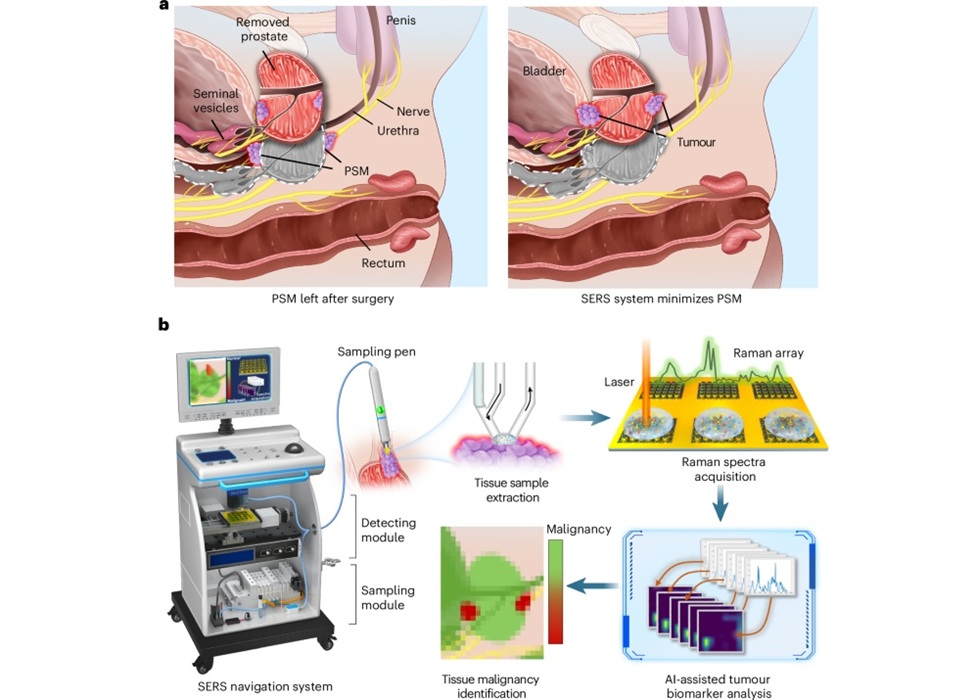Large-Bore Mechanical Thrombectomy More Beneficial for Intermediate-Risk Pulmonary Embolism
|
By HospiMedica International staff writers Posted on 12 Nov 2024 |

Over the past decade, catheter-based procedures such as catheter-directed thrombolysis (CDT) and large-bore mechanical thrombectomy (LBMT) have become more widely used to treat intermediate- and high-risk pulmonary embolism (PE) in order to reduce the bleeding risks associated with systemic thrombolysis. While observational studies on CDT and LBMT have both shown favorable outcomes, no prior randomized controlled trials have directly compared the two approaches. A new international randomized controlled trial has now provided evidence that LBMT is superior to CDT with respect to the hierarchically-tested aggregated outcome that includes all-cause mortality, intracranial hemorrhage, major bleeding, clinical deterioration, escalation to bailout therapy, post-procedural ICU admission, and ICU length of stay.
The PEERLESS study, conducted by researchers at Emory University Hospital (Atlanta, GA, USA), randomized 550 hemodynamically stable adults with acute PE, right ventricular dysfunction, and at least one additional clinical risk factor for adverse outcomes. All participants had no absolute contraindications to thrombolytics and were randomly assigned to either LBMT (n=274) or CDT (n=276) in a 1:1 ratio. This trial, conducted from February 2022 to February 2024, included 57 sites across the United States, Germany, and Switzerland. Participants were followed up at 24 hours, discharge (or 7 days), and at 30 days. The primary endpoint was a hierarchically tested win ratio based on five outcomes: all-cause mortality, intracranial hemorrhage, major bleeding per ISTH definition, clinical deterioration or escalation to bailout therapy, and post-procedural ICU admission and length of stay, assessed at discharge or 7 days after the procedure.
The study results, published in the journal Circulation, showed that LBMT significantly outperformed CDT in the primary endpoint, with a win ratio of 5.01 (95% CI: 3.68–6.97, p<0.001). While the rates of all-cause mortality, intracranial hemorrhage, and major bleeding were similar between the two groups, the ICU admission rate was markedly lower for LBMT patients compared to CDT patients (41.6% versus 98.6%, p<0.001). Moreover, LBMT patients had a lower incidence of clinical deterioration or escalation to bailout therapy (1.8% versus 5.4%, p=0.038). LBMT also showed better improvement in symptom scores at 24 hours, a shorter hospital stay (4.5±2.8 vs 5.3±3.9 nights; p=0.002), and fewer 30-day readmissions (3.2% versus 7.9%; p=0.03). The 30-day all-cause mortality was similar in both groups (0.4% vs 0.8%; p=0.62).
“The PEERLESS results represent the most robust evidence comparing two methods of intervention for pulmonary embolism to date,” said Wissam A. Jaber, MD, Professor of Medicine and Director of the Cardiac Cath Lab at Emory University Hospital. “LBMT was shown to be superior to CDT driven by significantly lower rates of clinical deterioration or escalation of therapy and ICU admission. LBMT was also associated with faster clinical and hemodynamic improvement at 24 hours, significantly shorter hospital stays, and fewer readmissions through 30 days.”
Latest Critical Care News
- Magnetically Guided Microrobots to Enable Targeted Drug Delivery

- Smart Nanomaterials Detect and Treat Traumatic Brain Injuries Simultaneously
- Earlier Blood Transfusion Could Reduce Heart Failure and Arrhythmia in Heart Disease Patients
- 'Smart' Shirt Detects Epileptic Seizures in Real Time
- Skin Patch Measures Effectiveness of Flu/COVID Vaccines in 10 Minutes
- Complete Revascularization Reduces Risk of Death from Cardiovascular Causes
- Tiny Fish-Inspired Robots Navigate Through Body to Deliver Targeted Drug Therapy
- Coronary Artery Stenosis Could Protect Patients from Pulmonary Embolism Effects
- Sweat-Powered Sticker Turns Drinking Cup into Health Sensor
- Skin-Mounted 3D Microfluidic Device Analyzes Sweat for Real-Time Health Assessment
- New Therapeutic Brain Implants to Eliminate Need for Surgery
- Stem Cell Patch Gently Heals Damaged Hearts Without Open-Heart Surgery
- Biomaterial Vaccines to Make Implanted Orthopedic Devices Safer
- Deep Learning Model Predicts Sepsis Patients Likely to Benefit from Steroid Treatment
- Programmable Drug-Delivery Patch Promotes Healing and Regrowth After Heart Attack
- Breakthrough Ultrasound Technology Measures Blood Viscosity in Real Time
Channels
Surgical Techniques
view channel
New Study Findings Could Halve Number of Stent Procedures
When a coronary artery becomes acutely blocked during a heart attack, opening it immediately is essential to prevent irreversible damage. However, many patients also have other narrowed vessels that appear... Read more
Breakthrough Surgical Device Redefines Hip Arthroscopy
Hip arthroscopy has surged in popularity, yet surgeons still face major mechanical constraints when navigating deep joint spaces through traditional cannulas. Limited tool mobility and the need for an... Read morePatient Care
view channel
Revolutionary Automatic IV-Line Flushing Device to Enhance Infusion Care
More than 80% of in-hospital patients receive intravenous (IV) therapy. Every dose of IV medicine delivered in a small volume (<250 mL) infusion bag should be followed by subsequent flushing to ensure... Read more
VR Training Tool Combats Contamination of Portable Medical Equipment
Healthcare-associated infections (HAIs) impact one in every 31 patients, cause nearly 100,000 deaths each year, and cost USD 28.4 billion in direct medical expenses. Notably, up to 75% of these infections... Read more
Portable Biosensor Platform to Reduce Hospital-Acquired Infections
Approximately 4 million patients in the European Union acquire healthcare-associated infections (HAIs) or nosocomial infections each year, with around 37,000 deaths directly resulting from these infections,... Read moreFirst-Of-Its-Kind Portable Germicidal Light Technology Disinfects High-Touch Clinical Surfaces in Seconds
Reducing healthcare-acquired infections (HAIs) remains a pressing issue within global healthcare systems. In the United States alone, 1.7 million patients contract HAIs annually, leading to approximately... Read moreHealth IT
view channel
EMR-Based Tool Predicts Graft Failure After Kidney Transplant
Kidney transplantation offers patients with end-stage kidney disease longer survival and better quality of life than dialysis, yet graft failure remains a major challenge. Although a successful transplant... Read more
Printable Molecule-Selective Nanoparticles Enable Mass Production of Wearable Biosensors
The future of medicine is likely to focus on the personalization of healthcare—understanding exactly what an individual requires and delivering the appropriate combination of nutrients, metabolites, and... Read moreBusiness
view channel
Philips and Masimo Partner to Advance Patient Monitoring Measurement Technologies
Royal Philips (Amsterdam, Netherlands) and Masimo (Irvine, California, USA) have renewed their multi-year strategic collaboration, combining Philips’ expertise in patient monitoring with Masimo’s noninvasive... Read more
B. Braun Acquires Digital Microsurgery Company True Digital Surgery
The high-end microsurgery market in neurosurgery, spine, and ENT is undergoing a significant transformation. Traditional analog microscopes are giving way to digital exoscopes, which provide improved visualization,... Read more
CMEF 2025 to Promote Holistic and High-Quality Development of Medical and Health Industry
The 92nd China International Medical Equipment Fair (CMEF 2025) Autumn Exhibition is scheduled to be held from September 26 to 29 at the China Import and Export Fair Complex (Canton Fair Complex) in Guangzhou.... Read more









.jpg)




